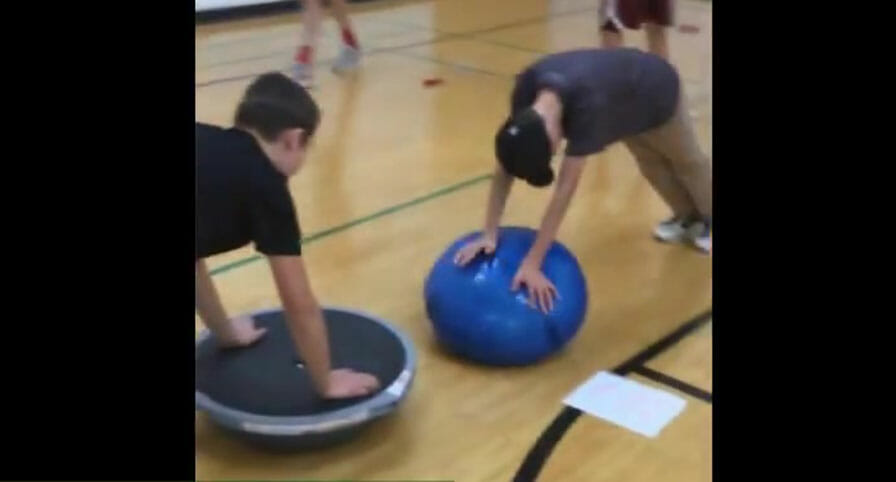Teachers are adopting a high-intensity interval training model to ensure their physical education students maximize the benefits of exercise in each class session.
“I think students overall like this type of class better than your traditional, old school, physical education class,” said Lunenburg (Mass.) High School PE teacher Steve Boone. “I think they like individual workouts.”
One of Boone’s most popular lessons is a circuit that encourages students to exercise at high intensity for quick bursts of time. Depending on the age and ability of his students, Boone’s circuit – also referred to as a Tabata – requires that participants see how many high-intensity repetitions they can perform in 20 seconds at eight different stations.
It’s a popular teaching concept that keeps students moving and prevents them from struggling to perform an exercise they don’t like or struggle with.
“Hopefully, at some point, at one of those stations or at a few of them, you have something that you are really good at or find something that you really enjoy doing,” said Craig MacDerment, a physical education teacher at Shelburne (Vt.) Community School. “In a traditional game, if you spend 30 minutes playing a game that you don’t like, you’re really not going to get much out of it.”
High-intensity circuits for all ages
MacDerment, along with colleague Kelly Spreen, devised a circuit workout for their elementary and middle school students that doesn’t move quite as quickly as Boone’s workout does with his high schoolers or adult education participants, but the objective the same: to maximize performance and reach class goals. Students wear heart rate monitors on their wrist and strive to stay in target heart rate zones for the duration of their workout.
Shelburne’s young students spend three minutes on a station working on different skills. During each rest period between exercises, students practice implementing a positive classroom culture by delivering compliments and encouragement to classmates.
Boone’s circuit starts with a 20-second burst to perform as many high-intensity reps as possible and then progresses:
- 10 seconds to make it to the next station and begin that exercise
- Repeat process of 20 seconds on, 10 seconds off through each station to complete the full circuit
- 60 seconds recovery time after each circuit before beginning the next rotation
By delivering workouts that mirror the HIIT philosophy, teachers show students how they can go through a strenuous, fitness-improving workout without spending a great deal of time doing it. In some studies, including McMaster University (Canada) study featured in the New York Times, exercising at maximum intensity provides the same health benefit as exercising for 45 minutes at a moderate intensity level.
“If you are someone, like me, who just wants to boost health and fitness and you don’t have 45 minutes or an hour to work out,” said Martin Gibala, a McMaster University professor who oversaw the study, “our data show that you can get big benefits from even a single minute of intense exercise.”




